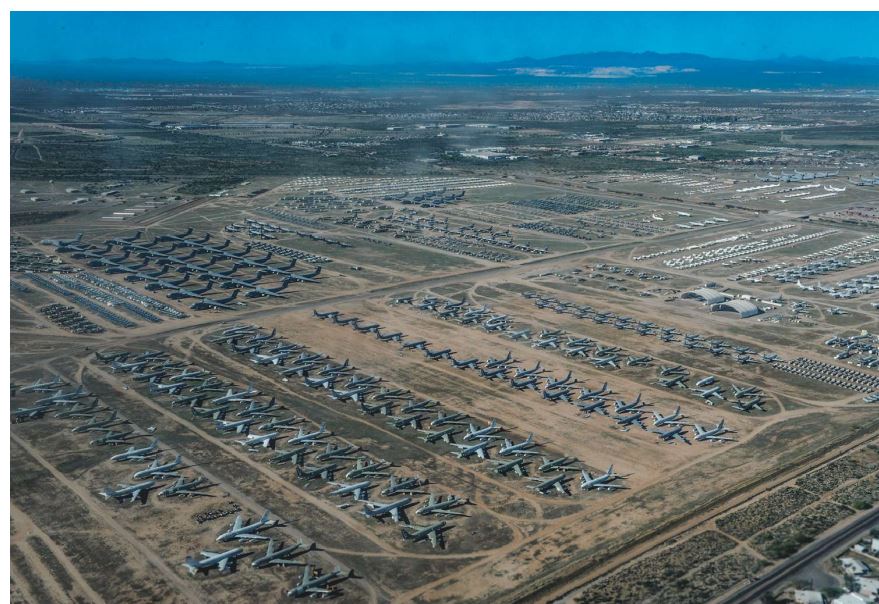The 309th Aerospace Maintenance and Regeneration Group (309 AMARG) at the Davis-Monthan Air Force Base (Tucson, Arizona, USA), commonly known as “The Boneyard,” is probably one of the strangest airfields in the world. It’s here that the U.S. Air Force, Navy-Marine Corps, Army, Coast Guard, and several federal agencies (including NASA) store their obsolete, unwanted, excess, and out-of-service aircraft. With more than 4,400 aircraft, 309 AMARG is the largest storage and preservation facility of this type in the world. Because there is little humidity in the air, the desert climate in Tucson is not conducive to corrosion, which makes it an ideal location to preserve the stockpiled aircraft.

The chief mission of the 309 AMARG is to supply the Air Force with spare parts. Parts from The Boneyard can make the difference between an aircraft being grounded or operational. When an aircraft arrives at the 309 AMARG, weapons and classified hardware are removed. It is then thoroughly washed, which is especially important for marine aircraft or those employed in tropical locations. Fuel is flushed and mechanical parts are protected with a lightweight oil. Canopies are sealed with a white vinyl latex coating to prevent them from becoming crazed and cracked, and to protect the cockpit interior from heat. Joints are sealed to keep out dust. Once this is done, the aircraft is towed to its storage area.
The hard soil at the airfield is strong enough to support the weight of a 300-metric ton aircraft, which makes it easy to move aircraft without the need for pavement. Most importantly, however, the airfield’s climate and clean air minimize corrosion and degradation. The atmosphere here has a very low average humidity of 38%, so moisture contact 1943 – 2018 NACE INTERNATIONAL 75 (time-of-wetness) is minimal. Tucson is hundreds of kilometers away from a marine environment and corrosive sea salt, the hot climate has no snow (so deicing salt is not used), and there is no pollution from heavy industry. As a result, the corrosion rates are very low. Carbon steel corrosion rates in Phoenix, Arizona, which has an environment similar to Tucson, are reported to be ~5 μm/y, which is near the benign end of ISO Corrosivity Category C2-Low.1
Aircraft have been stored at this airfield since the end of the World War II, when the storage facility was established at Davis–Monthan Air Force Base for B-29 and C-47 aircraft because of Tucson’s low humidity, infrequent rainfall, alkaline soil, and high altitude (2,550 ft [777 m])— all factors that help to reduce rust and corrosion.2 The inventory now includes F-15 and F-16 fighters, Hercules and Galaxy transports, A-10 attack planes, B-1 nuclear bombers, Harrier jump jets, experimental aircraft, helicopters, and missiles. Although the 309 AMARG is commonly perceived as an aircraft graveyard, a sizable percentage of the aircraft stored here will fly again. About 10% are kept in good condition in case they need to be deployed in the future by the United States or its allies. Some are used as target drones.
More information can be found in the online film, “The Boneyard,” by Jeff Watson.
References
- BS EN ISO 12944-2:2017, “Paints and Varnishes. Corrosion Protection of Steel Structures by Protective Paint Systems. Classification of Environments” (London, UK: BSI, 2017).
- “309th Aerospace Maintenance and Regeneration Group,” Wikipedia, The Free Encyclopedia, https://en.wikipedia.org/wiki/ 309th_Aerospace_Maintenance_and_ Regeneration_Group ( July 9, 2018).